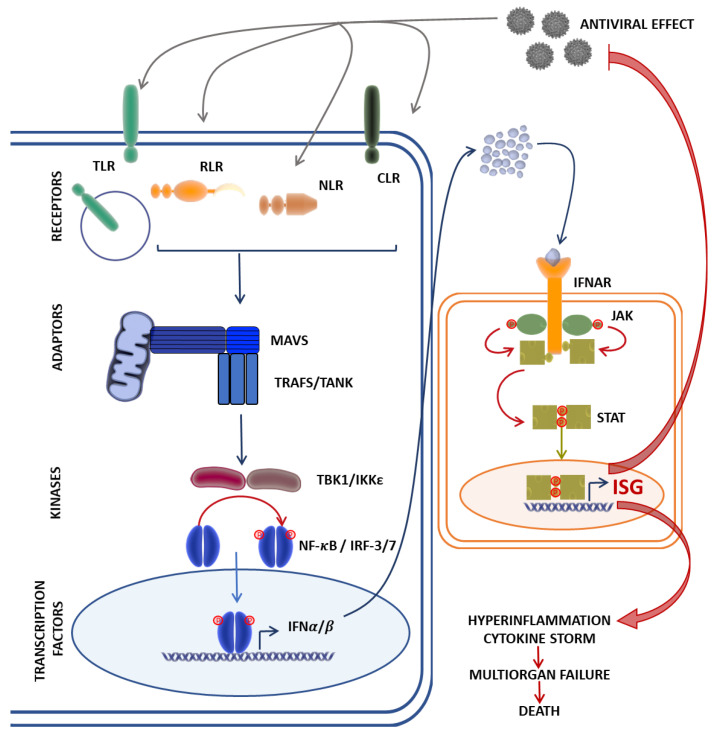Figure 1.
The Janus kinase–signal transducer and activator of transcription (JAK-STAT) signaling pathway mediates the innate immune response against viral infection. Cytosolic viral RNA recognition by pathogen recognition receptors such as the Toll-like receptors (TLR), RIG-I-like receptors (RLR), NOD-like receptors (NLR), and the C-type lectin receptors (CLR) induce interactions with the mitochondrial antiviral signaling protein (MAVS) and its co-adaptor molecules, TRAFs, which, acting through the TBK1/IKKε axis, activate nuclear factor-κB (NF-κB) and interferon regulatory factor (IRF-3/IRF-7) expression of type I interferons (IFNα/β). Type I IFN recognition and binding to IFNα receptors (IFNAR) activates JAKs, leading to the phosphorylation and translocation of STATs to the nucleus, resulting in the target gene expression of antiviral ISGs, and proinflammatory cytokines by transcriptional factors NF-κB and IRFs. A dysregulated immune response in rare cases might result in fatal outcomes due to hyperinflammation and the cytokine storm. ISG, interferon-stimulated gene; RIG-I, retinoic acid-inducible gene I; TRAF, tumor necrosis factor receptor-related factor; TBK1, TANK-binding kinase 1; IKKε, IκB kinase ε.

